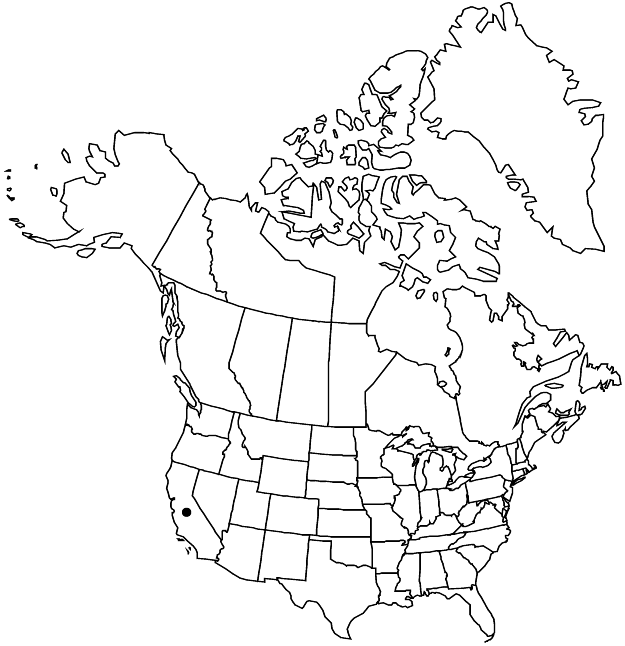Sidotheca emarginata
Harvard Pap. Bot. 9: 211. 2004.
Plants 0.3–3 × 0.3–5 dm. Stems spreading to prostrate. Leaf blades spatulate to oblanceolate, 1.5–7.5 × 0.4–1.5 cm. Inflorescences open, 0.2–3 dm; bracts mostly 5–10 × 1–3(–5) mm, awns 1–2 mm. Peduncles erect, 0.5–3 cm, glandular. Involucres white-margined, broadly funnelform and laterally compressed, 4–8 × 9–12 mm, glabrous; teeth 5, connate more than 3/4 their length, awns reddish, 1–1.5 mm. Flowers 3–6; perianth white to pink, (2–)3–4.5(–5) mm; tepals narrowly oblong, 3–5-lobed apically 1/3–1/2 their length, lobes laciniate; filaments 3–5 mm; anthers red, oval to oblong, 1–1.2 mm. Achenes golden brown, 1.8–2 mm.
Phenology: Flowering Feb–Aug.
Habitat: Gravelly to rocky places, chaparral communities, montane coniferous woodlands
Elevation: 1200-2500 m
Discussion
Sidotheca emarginata grows in the San Jacinto and Santa Rosa mountains of Riverside County. The white-margined, papery involucre is a distinctive feature that might make the plant an attractive addition to an annual garden.
of conservation concern
Selected References
None.
